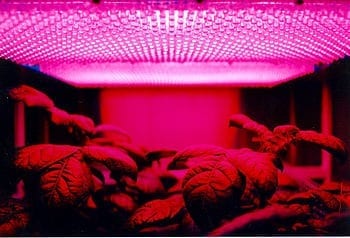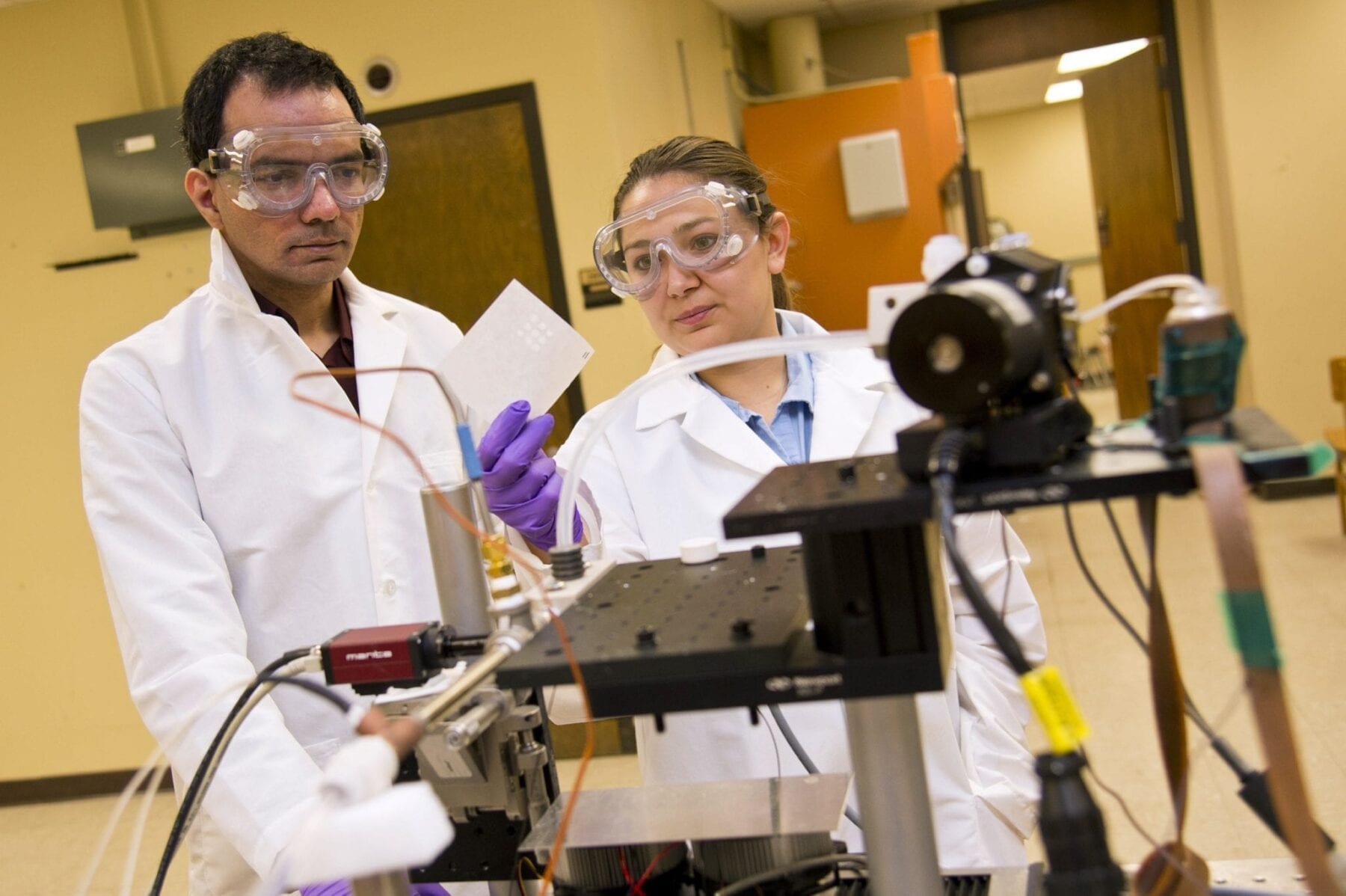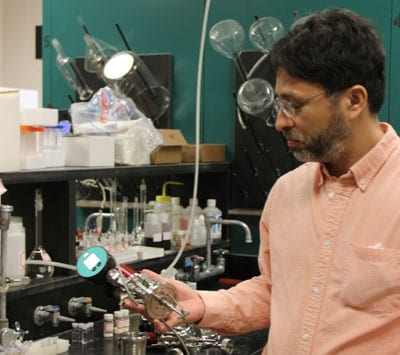
Indoor farming may be taking root
A GREY warehouse in an industrial park in Indiana is an unlikely place to find the future of market gardening. But it is, nevertheless, home to a pristine, climate-controlled room full of eerily perfect plants. They grow 22 hours a day, 365 days a year in 25-foot towers, untouched by pests and bathed in an alien pink light.
Critical to this $2.5m techno-Eden, run by a firm called Green Sense Farms, are the thousands of blue and red light-emitting diodes (LEDs) supplied by Philips, a Dutch technology firm. The light they give off is of precisely the wavelength craved by the crops grown here, which include lettuce, kale, basil and chives.
The idea of abandoning the sun’s light for the artificial sort is not new. It offers plenty of advantages: no need to worry about seasons or the weather, for instance, not to mention the ability to grow around the clock (although a couple of hours a day are necessary, says Gus van der Feltz of Philips, for the plant equivalent of sleep). Moving plants indoors allows them to be coddled in other ways, too. Water can be recycled continuously, and sensors can detect which nutrients are missing and provide them in small, accurate bursts.
However, LEDs offer a host of benefits over traditional, fluorescent growing lights. For one thing, they are far more efficient, which helps to keep electricity bills down. High efficiency means less heat, which makes air conditioning cheaper. Being cooler, the lights can be placed closer to the plants, so the crops can be planted more densely. The wavelengths of the light can be fine-tuned so that lettuce is crisper, or softer, says Robert Colangelo, the president of Green Sense Farms. Your correspondent tasted soft, sweet kale nibbled straight off the plant. It was delicious.
The crops grow faster, too. Philips reckons that using LED lights in this sort of controlled, indoor environment could cut growing cycles by up to half compared with traditional farming.
The Latest on: Indoor farming
[google_news title=”” keyword=”Indoor farming” num_posts=”10″ blurb_length=”0″ show_thumb=”left”]
via Google News
The Latest on: Indoor farming
- FARMING IN THE DARK: Researchers are growing gene-edited plants without lighton May 9, 2024 at 7:00 am
One advanced indoor farming company hopes to remove light from the process — essentially growing food in the dark. This Square Roots farm outside of Chicago is one of five commercial-scale farms the ...
- A hemp farming executive just donated $237M to Florida A&M. His last college gift failedon May 8, 2024 at 10:37 am
It’s reportedly the largest donation ever to a historically Black college or university. Why is there so much skepticism surrounding the $237 million gift?
- More groups react to farm bill proposalson May 7, 2024 at 11:12 am
Groups with interests in a new farm bill continue to comment on the proposals released last week by Senate Agriculture Committee Chairwoman Debbie Stabenow, D-Mich., and House Agriculture Committee ...
- East Phillips urban farm pushing forward as funding uncertainty threatens Roof Depot saleon May 6, 2024 at 8:14 am
Environmental activists embroiled in a decade-long fight with Minneapolis over a prime slice of real estate in the East Phillips neighborhood are seeing victory on the horizon, as investors and ...
- Indoor Farming Market Evolution 2023-2031: Leading Players and Growth Analysison May 3, 2024 at 4:27 am
Astute Analytica recently published a report on the global Indoor Farming market. The report aims to provide comprehensive insights into the market dynamics, growth opportunities, and strategies for ...
- Long Island Game Farm giraffe Bobo died of cold and malnourishment, USDA sayson May 1, 2024 at 5:11 pm
Bobo the giraffe died last year at the Long Island Game Farm in Manorville because he was malnourished and living in conditions too cold for his species, according to a report by the U.S. Department ...
- Tazewell indoor salmon farm adjusts courseon April 29, 2024 at 5:00 pm
Pure Salmon is adjusting plans for its indoor fish farm in Tazewell County, says County Administrator Eric Young. Photo by Earl Neikirk The $228 million Pure Salmon facility on 200 acres straddling ...
- Inside This Innovative Indoor Hydroponic Farm In The Maldiveson April 29, 2024 at 4:40 am
Dubai, United Arab Emirates; 29 April 2024: OZEN LIFE MAADHOO proudly boasts one of the Maldives' only indoor hydroponic farms as part of its ongoing efforts to bolster food security, safeguard the ...
- From farm to fork: Clayton Farms and fresh saladson April 28, 2024 at 7:40 pm
ISU alumnus Clayton Mooney moved back to Ames and enrolled in ECON 334 (Entrepreneurship in Agriculture) at Iowa State University. During the class, he met four other students and worked with them to ...
- Richmond indoor farming startup rolls out units aimed at K-12 schoolson April 26, 2024 at 2:49 am
Babylon Micro-Farms recently unveiled The STEM Garden, a hydroponic device used to grow vegetables indoors and geared toward classroom instruction.
via Bing News









